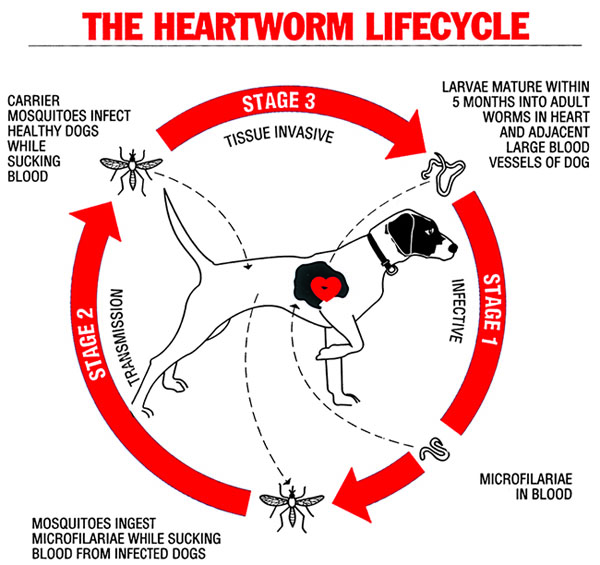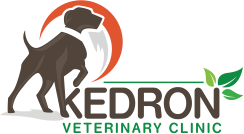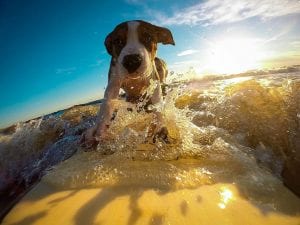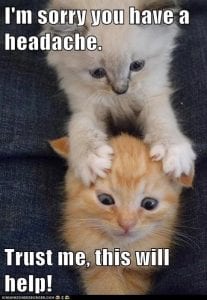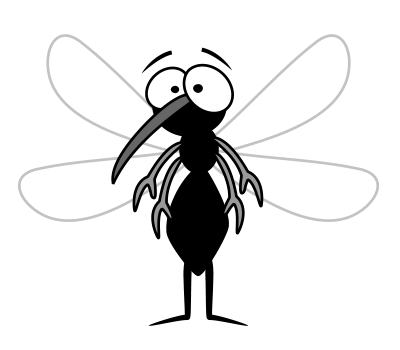Blog
Happy Tails and Crafty Trails
Engaging with our pets goes beyond walks and playtime, it can also involve some creative DIY projects! Here are some fun and practical ideas that will not only entertain your pets but also deepen your bond with them.
- Homemade Pet Toys
Why buy toys when you can make them? An old t-shirt can easily be transformed into a tug toy. Simply cut the fabric into strips, braid them together, and tie off the ends. For indoor fetch, try making a sock ball by placing a tennis ball inside a clean sock and tying it shut. Your pet will love these personalized toys! - DIY Puzzle Feeders
Challenge your pet’s mind with puzzle feeders. One simple idea is to use a muffin tin: place treats in some cups and cover others with tennis balls. This encourages your pet to figure out how to remove the balls to get their snack. Alternatively, take an empty cardboard box, fill it with crumpled paper, and hide some treats inside. It’s a fun digging activity that also provides mental stimulation. - Pet-Friendly Garden
Create a little oasis for your pets with a pet-friendly garden. Plant catnip or wheatgrass in small pots for your cat to enjoy. If you have outdoor space, consider designing a flower bed with non-toxic plants like lavender and rosemary, allowing your pets to explore safely. - Cozy Pet Beds
Transform an old suitcase or sweater into a cozy bed for your pet. For the suitcase, simply add a cushy pillow inside for a unique touch. For the sweater bed, stuff an old sweater with soft materials and sew the openings shut. Both options provide warmth and comfort for your furry friends. - Interactive Feeders
Engage your pet’s curiosity with a DIY interactive feeder. Use an egg carton to create a fun challenge: fill the cups with kibble or treats and cover some with small toys. Your pet will love figuring out how to access the hidden snacks! - Creative Costumes
Get into the spirit of the season with simple DIY costumes. Fashion stylish bandanas from fabric scraps by cutting them into triangles and hemming the edges. For a fun Halloween idea, create a superhero cape from an old shirt or a flower crown using paper and string. - Grooming Tools
A rubber glove can serve as a makeshift brush for your pet. Simply pet your animal with the glove to remove loose fur while giving them a gentle massage. - Portable Water Bottle
For those on-the-go moments, create a portable water bottle bowl by attaching a small bowl to a water bottle using an old belt or fabric. It’s a convenient way to keep your pet hydrated during walks!
These DIY projects are not only enjoyable but also foster creativity and strengthen your bond with your furry companions. So gather your supplies and let the crafting begin!
Elaine’s Fractured Fairytale
Elaine, a young cat, was surrendered to our clinic after her owner faced financial difficulties and could not afford treatment for her broken pelvis. Upon examination, Elaine was completely lame in her back legs and suffered from incontinence, significantly impacting her quality of life.
It was unclear how Elaine sustained her injury, but these fractures are normally due to trauma such as falls or accidents. Our veterinary nurse, Meg, took Elaine under her wing, and after consultation with a specialist, opted for a cost-effective conservative treatment plan focused on careful management rather than surgery. This included four weeks of strict cage rest combined with anti-inflammatory medications to reduce pain and swelling.
According to veterinary literature, non-surgical management can be effective for certain types of pelvic fractures, particularly when there is no displacement of the fracture fragments. Cage rest is critical in this regard, it allows the fractured bones to stabilise and begin healing without the interference of movement. The healing process involves the formation of a callus, which provides stability to the fractured area. During the first two weeks, bone remodelling starts, and by weeks three to four, significant healing occurs as the muscles begin to strengthen and take over the job of the previously connected bones and joints.
In Elaine’s case, her response to treatment was monitored closely. As she remained cage-rested, we observed gradual improvements in her mobility. The anti-inflammatory medications played a vital role in managing her pain, enabling her to begin regaining strength and coordination.
Research suggests that stress reduction is equally important during recovery. A calm environment, like her cage, minimises anxiety and aids healing by allowing the body to focus on recovery rather than stressors. After four weeks of dedicated care, Elaine demonstrated significant improvement. She was regaining mobility and was no longer incontinent. Elaine’s playful personality began to re-emerge, marking a positive turn in her recovery.
Elaine’s case underscores the importance of proper management for pelvic fractures. With the right treatment plan, without hasty surgical intervention and specialist consultation some animals can recover fully and return to a normal, active life. We are grateful for the support of our community, which enables us to help pets like her. Every contribution makes a difference, and together, we can give these animals a second chance at happiness!
Walking the Line Between Control and Chaos
As the chilly embrace of winter settles in, it’s the perfect time to embark on outdoor adventures with our furry companions without the sweltering heat. Whether it’s a leisurely stroll in the park or a brisk jog around the neighbourhood, mastering leash etiquette is crucial for both the safety and enjoyment of all involved. Here are some essential tips to ensure harmonious outings:
- Keep it Taut: Maintain a short leash to have better control over your dog. A loose leash can lead to wandering off, unwanted interactions, or even accidents.
- Mind the Gaps: Be mindful of the space between you, your dog, and others. Not all dogs are social butterflies, and some may feel anxious or threatened by unfamiliar faces. Keep a respectful distance from other dogs and people unless you’re sure of their compatibility.
- Scoop that Poop: Always carry waste bags and promptly clean up after your dog. Not only is it a legal requirement in most places, but it also demonstrates good citizenship.
- Heed the Commands: Basic obedience commands like “sit,” “stay,” and “heel” are invaluable tools for managing your dog’s behaviour on walks. Practice these commands regularly to reinforce good behaviour and establish yourself as the leader of the pack.
Handling and Training Leash-Reactive Dogs
Leash reactivity can be a challenging issue for many dog owners, but with the right approach and techniques, it’s possible to manage and even overcome this behaviour:
- Counterconditioning and desensitisation are powerful techniques for changing your dog’s emotional response to triggers. Start by exposing your dog to their trigger at a distance where they remain calm, then gradually decrease the distance over time while rewarding calm behaviour and pairing the trigger with positive experiences like treats or play.
- Practice “Look at That” Games: “Look at That” games involve teaching your dog to look at their trigger and then back at you for a reward. This not only redirects their attention away from the trigger but also reinforces the idea that good things happen when they see it. Start by rewarding any glance towards the trigger and gradually increase the duration of eye contact with you before giving the reward.
- Management tools like head halters or front-clip harnesses can provide additional control during walks and help redirect your dog’s focus and prevent them from pulling or lunging towards their triggers. However, it’s essential to introduce these tools gradually and ensure they fit properly to avoid discomfort or stress.
- Work with a Professional: If you’re struggling to make progress on your own, consider seeking assistance from a certified dog trainer or behaviorist. A professional can provide personalized guidance, support, and structured training plans tailored to your dog’s specific needs. They can also offer valuable insights and techniques that you may not have considered.
Our PU-rspective: Tippie’s Triumph
In the realm of veterinary medicine, there are moments that show the profound impact of advanced procedures on the lives of our cherished animal companions. Recently, we encountered such a moment with Tippie, a feline friend who grappled with chronic urinary tract blockages and crystalluria for over 4 years. His journey culminated in a transformative procedure known as Perineal Urethrostomy (PU) surgery.
Perineal Urethrostomy, while sounding daunting, is actually a beacon of hope for cats like Tippie. This is a complex surgical intervention often recommended for male cats facing severe urinary obstructions. At its core, this procedure involves the removal of the narrowest part of the urethra, widening Tippie’s urinary passage and paving the way for smoother, happier bathroom breaks essentially allowing crystals, small stones and mucus plugs to pass through the urethra without causing an obstruction. The penis is then removed, and a permanent urethral opening is created at the level of the pelvic urethra. Tippie’s case highlighted the critical importance of this procedure in managing recurrent urinary issues.
Guided by the expertise of a specialist surgeon, Tippie underwent PU surgery at Kedron Vet. This decision was informed by the understanding that chronic urinary tract blockages pose significant risks to a cat’s health and well-being. Through meticulous surgical technique and compassionate care, Tippie’s journey towards healing commenced.
To all the pet parents out there, remember to listen to your fur babies’ cues. If you notice anything amiss—like Tippie’s struggles with urination—don’t hesitate to reach out to us. After all, a little proactive care goes a long way in keeping those tails wagging and whiskers twitching with joy. Recognising the signs of urinary issues in cats is paramount for early intervention. Symptoms such as straining to urinate, frequent urination attempts, blood in the urine, and vocalisation during urination should prompt immediate veterinary attention. Symptoms can become harsh and life threatening in cases where the obstruction does not allow urine to exit the body. In these cases, the cat will be unable to produce urine and the pain and discomfort can cause the cat to cry, hide and become restless, eventually you can expect them to become lethargic and lose their appetite. Cats are mostly affected between the ages of 1 to 10 and can be more likely to experience problems if they have underlying health issues such as obesity or diabetes.
At Kedron Vet we remain steadfast in our commitment to providing exemplary care for every patient entrusted to us. Whether it’s a routine checkup or a paw-some surgical intervention like Tippie’s, we’re here to support you every step of the way.
Spring Newsletter 2023
Bone Appetit
We’re expanding our range of pet food available to our clients at Kedron Vet, introducing options of a more affordable yet high-quality range with tasty ingredients that are wonderful for our more sensitive or intolerant patients. You’ll see our Delicate Care range for cats and dogs and our Prime 100 wet food range for dogs, read on to learn more about these new products!
Delicate Care is a brand that specialises in creating food for pets with sensitive stomachs and food allergies. The company’s mission is to provide pet owners with high-quality, all-natural pet food that is free from harmful additives and preservatives. The ingredients used in Delicate Care’s products are carefully selected to ensure that they are easy to digest and unlikely to cause allergic reactions in pets. The brand offers a range of food options, including dry kibble, wet food, and treats, all of which are made with the same high-quality standards. As Delicate Care is only available through veterinary clinics, you can trust you’re getting an expert opinion on the very best food for your cat or dog’s life stage or condition.
Prime 100 offers a range of single-protein dog food options that are designed to provide dogs with a low-allergen complete and balanced diet. The brand’s philosophy is to keep things simple by using only one source of protein in each product, which makes it easy for pet owners to identify and avoid any potential food allergies or intolerances. Prime 100’s products are Australian-made with premium quality meat, novel proteins, fish, and vegetables, and are free from artificial colours, flavours, and preservatives.
One of the key benefits of both Delicate Care and Prime 100 is that they are made with premium, natural ingredients that are carefully selected to ensure that they provide pets with the nutrients they need to thrive. This means that pets are less likely to experience digestive problems, allergies, or other health issues that can be caused by low-quality, heavily processed pet food.
In addition to their fresh ingredients, Delicate Care and Prime 100 are also committed to using sustainable and ethical sourcing practices. The brands work with suppliers who prioritize animal welfare and environmental sustainability, which is becoming increasingly important to pet owners who are concerned about the impact their pets’ food has on the planet.
Overall, Delicate Care and Prime 100 are both excellent options for pet owners who are looking for specific dietary requirements to enhance their pet’s energy, vitality and potential through nutrition. Ask us which diet might be right for your furry friend today!
Enjoy or Destroy? A Toy Story
It turns out that toys aren’t just things your dog likes to play with – they serve a vital purpose in their mental and physical development. They’re also powerful tools for behaviour modification. The truth of the matter is that your dog isn’t really thinking of any of these things when they pull their favourite toy out of the basket – they’re just interested in having a grand old time. Let’s look at some of the types of toys dogs like to play with, and what drives some of their behaviours during playtime.
Why do dogs play with fetch toys?
Long before we thought of dogs simply as vital companions, they served various purposes in households around the world. One of those was hunting and/or retrieving food. That behaviour has become melded into many breeds’ DNA over thousands of years. It’s natural and even pleasurable for a dog to seek out and return things to their human.
Why do dogs like squeaker toys?
There are a few different theories as to why dogs love the totally pleasant, wonderfully soothing sounds emitted by a squeaker toy. Not. The first theory has to do with genetics. Even though your sweet pup might fit in a tote bag, they’re only a few evolutionary steps removed from their wolf ancestors. And wolves hunt other creatures to survive. Those creatures tend to make a lot of noise while being hunted. Go figure! So, when your dog goes wild on their favourite squeaker, what they’re doing is responding to their instinct to hunt (and destroy) their “prey.” Dogs also love getting attention from their humans. And guess what? There are few things more effective at getting a human to stop whatever they’re doing and pay attention to their dog than the incessant yelps of a squeaker.
Why do dogs like chewing toys?
Dogs explore the world and interact with it differently than their human counterparts. Where a human might use their hand to do something, a dog uses their mouth. Naturally, this leads to a lot of chewing. There are many different explanations as to why a dog might chew something, but one of the most obvious ones is that the thing your dog is chewing on tastes or smells delicious. High-energy or anxious dogs also tend to chew a lot as a means of relieving boredom or stress. Growing research suggests that chewing acts as a form of tool use. Whether they’re chewing a stick to dull a tooth pain or a toy or to quell restless energy, chewing showcases how the gears are always turning in dogs’ brains. They like tasks, and they’ll look for solutions wherever they can find them. Even the act of positioning a toy between their two paws suggests intention and forethought, which fits the definition of “tool use.”
Choosing the wrong toys
No matter the reason for your dog’s ‘play or destroy’ tendencies, if they are consistently making minced meat of their toys, it may be time to invest in some tougher play-things. Dogs are thinkers. They’re naturally inquisitive and they love exploring. Puzzle or thinker toys are a great way to keep dogs engaged, especially if they’re home alone for extended periods of time. They challenge your dog to use his body and mind to earn treats. And if toy-shredding is a learned behaviour for your pooch, try something the two of you can play with together.
Autumn Newsletter 2023
Go With the Grain
In the wide world of dogs, there are debates aplenty. To buy or rescue? To train with treat lures or not train with treat lures? To let your doggo roam off-leash or keep them restrained? One of the most hotly contested is the decision whether to feed your furbaby regular or a grain-free diet for dogs. If you’re wondering if you too should go against the grain, we’ve put together a few of the pros and cons of each one to help you decide.
What exactly is grain-free dog food?
Regular dog food usually contains a combination of grains like corn, rice, wheat, barley, oats, rye, and soy. Grain-free dog food, on the other hand, is simply any kind of dog food made without these grains. Grains are a good source of carbohydrates for dogs. So, grain-free foods often use ingredients such as peas, lentils, potatoes or sweet potatoes to up the carb count.
Why do some dog owners choose grain-free?
With humans trending towards diets like paleo and keto, several experts believe that lots of owners have opted to switch to a grain-free diet for their dogs, too. The main argument behind choosing grain-free dog food is that it more closely mirrors a dog’s natural diet. Grain-free diet advocates say that dogs are carnivores and should only eat meat – as they do in the wild. Many also believe that regular dog foods are too high in carbohydrates, and that they can cause allergies in dogs. In actual fact, dogs are omnivores. This means that they get their nutrition from both animal and plant sources, including grains. Many grain-free diet proponents deem grains as “fillers”, but they’re excellent sources of nutrients for dogs. Grains contain fibre, carbohydrates, and even protein. And because many of them are complex carbs – like brown rice, for example – they contain slow-release energy that won’t cause blood sugar spikes.
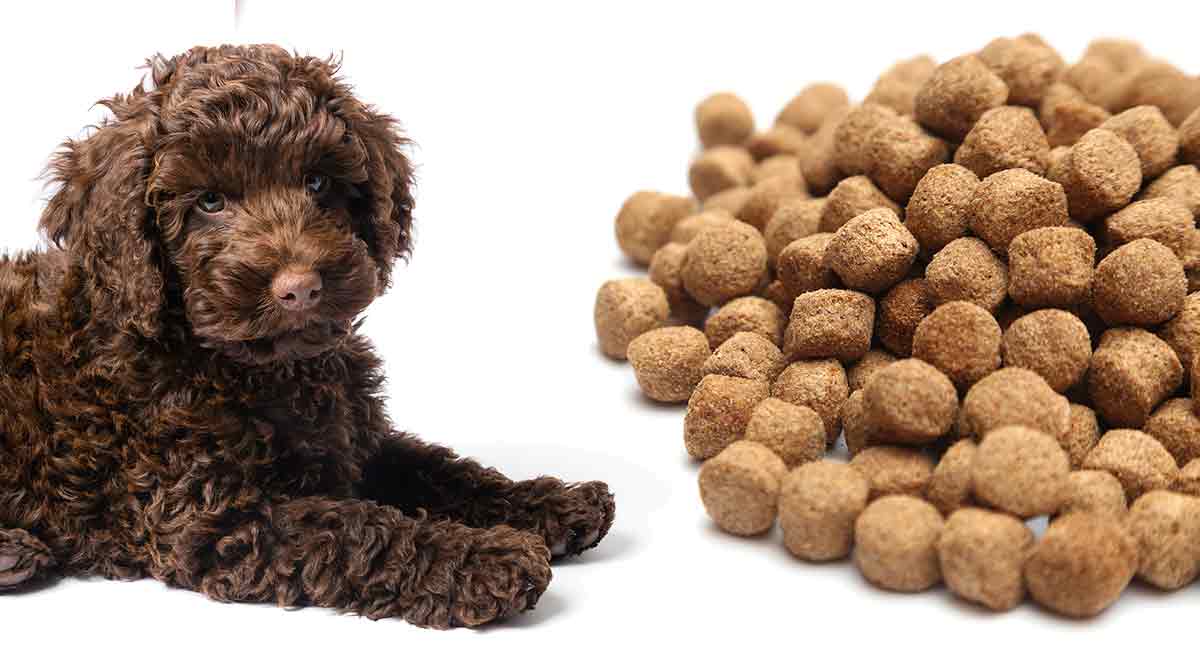
While the percentage is very small (somewhere around 1 per cent), a number of dogs do suffer from grain allergies. The symptoms can vary between dogs, but typically a dog who can’t tolerate grains may experience dry, flaky or itchy skin; a rash; hair loss; red and inflamed paw pads; ear infections; or digestive issues, including vomiting and diarrhoea.
So, how do I decide which food to buy?
A healthy dog with no allergies or underlying health issues can safely live on regular food, such as quality dry dog food. In fact, dogs are often best sticking to the food they’re used to. This is because a dietary change can put pressure on their digestive system unless you introduce the food very slowly. If you think your dog would benefit from a grain-free diet, you might want to chat to your vet first. We can advise whether it’s necessary for your dog to avoid grains, be it for allergy or other health reasons. Then, if you decide to make the switch you can slowly start to introduce grain-free options to your doggo’s diet.
Now I Know My CBDs
Hemp Oil has finally been recognised as a true superfood with a vast array of nutrients considered to be important for good health. Hemp is quickly growing in popularity as a supplement for humans, but our companion animals need it too!
After experiencing the amazing health benefits of Hemp first hand, Arthur, Sandra and Arthur’s sister Nicole in conjunction with Australian scientists, hemp industry experts, naturopaths and vets developed HempPet. The first Australian made Hemp pet range to be introduced to the market. We stock the full range at Kedron Vet including CBD oil, nectars, treats and shampoos.
What is Hemp?
Hemp (Cannabis sativa) is the same species of plant as cannabis. Unlike cannabis, hemp contains very low levels of delta-9-tetrahydrocannabinol (THC) meaning it is a not an intoxicant or psychoactive. Both hemp and cannabis also contain cannabinoids fats, protein, and other chemicals. CBD oil is, in a nutshell, all of the goodness from the cannabis plant. It has been vastly studied and researched in recent times. If you hear someone talking about therapeutic benefits of cannabis, chances are that they are talking about CBD oil.
What is it used for?
Animal owners have reported benefits such as reduced anxiety, reduction of pain, relief from arthritis, reduced inflammation, prevention or recovery from cancer, helping with seizures and epilepsy, and more. We have had wonderful results with anxiety and stress with our terpenes, hemp CBD oil and nectar. We find that a small amount of oil given orally (usually in food) will have a fantastic result. Many customers tell us within 3 days to a week that they or their anxious pet becomes a lot calmer and settled.
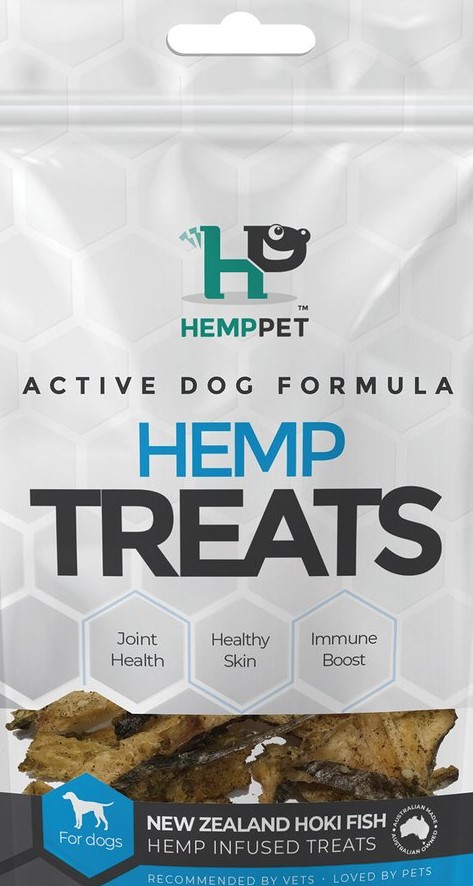
Celebrating 10 Years of being Family Owned
2023 officially marks 10 years since Dr Baron and his wife Karen began transforming Kedron Vet into what we are today. From our small beginnings next door at number 77, we are now a proudly growing small business and our reach is further and wider throughout Queensland than we ever could have imagined. We are so grateful for all of our clients and their furbabies who manage to put a smile on our faces everyd
Summer Newsletter 2022
Neutering your Pets Makes them Less Nuts!
One of the first questions many new dog owners have for their veterinarian is: “when is the best age to spay or neuter my dog?” It is a question that is fraught with controversy and conjecture, but now we have the evidence to provide an informed answer for you all. The latest research by the University of Davis, California published in July 2020 advises that the best age to desex a dog is highly dependent on the breed of the dog. For small-dog breeds (those under 15kg) the consensus is that the majority can be desexed around 6 months of age. There are specific breeds where the recommendation is to desex closer to 1 year of age and for some high cancer risk breeds or breeds with increased risks of bone developmental issues or urinary incontinence, the recommendation is to spay or neuter after 2 years of age.
The primary reason for desexing dogs at 6 months of age is to prevent them from reproducing. Globally, there is an overpopulation of unwanted dogs, that puts a high burden on society and of course is not great for these dogs and their health. Desexed animals are also often more socially acceptable; they are less likely to be aggressive or wander in the search of other dogs to breed with. Other benefits of desexing at 6 months of age include reducing the effects of sexual behaviours such as flagging in bitches and urine marking in male dogs as well as reducing the risk of reproductive cancers. Many dogs become sexually mature between 6 months and 10 months, so it makes perfect sense to desex before this occurs.
How was the study performed?
This was a retrospective study that followed dogs over a period of 15 years who visited the University of Davis, Veterinary Medical Teaching Hospital. 35 dog breeds were included in the study which chose to examine types of cancer that previous studies had found could be affected by neuter status including lymphoma and mast cell tumours. The orthopaedic diseases examined in this study included cruciate ligament tears and hip dysplasia. See the table below for the results of when to desex certain breeds depending on the results they found.
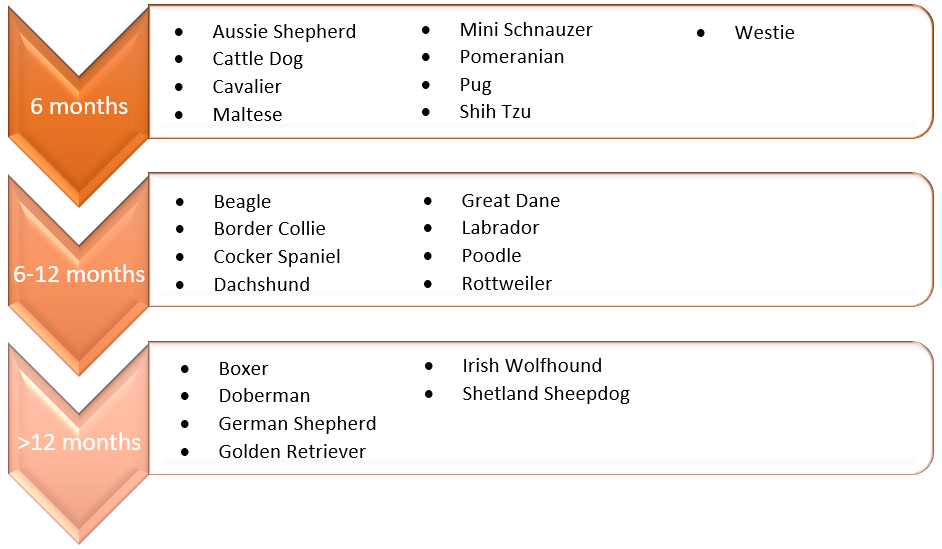
Is your name Arthritis? ‘Cause you make we weak in the knees.
Cats hide almost everything, especially pain. This checklist will help your veterinarian identify your cat’s activities and behaviours that might be signs of osteoarthritis (OA), a degenerative joint disease that can be painful.
Is your cat showing signs of OA-related pain?
Think about your cat’s activity in the past month. Check all of the signs that you’ve observed in your cat.
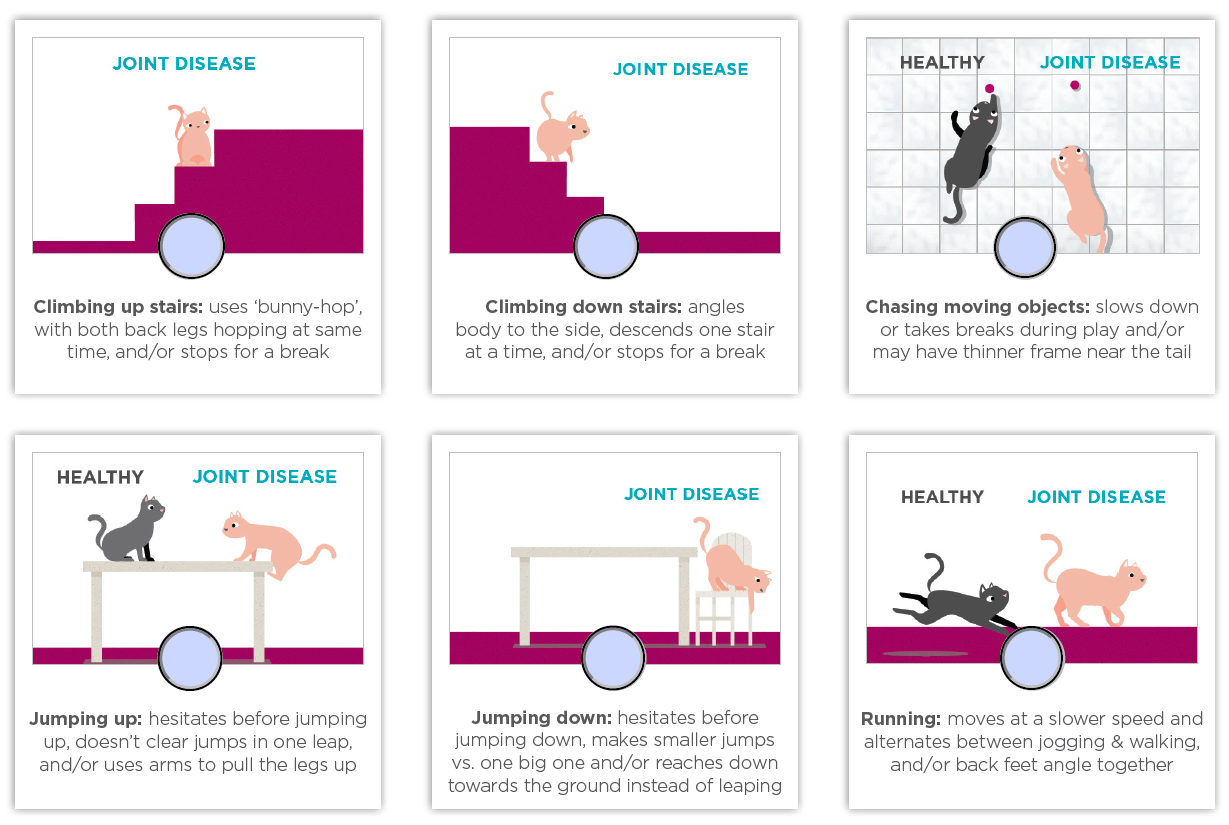
Just as in humans, chronic pain negatively impacts your cat’s quality of life, not just physically, but also emotionally. The good news is that by identifying OA early, you and your veterinarian can develop a treatment plan for your cat.
Osteoarthritis pain can affect cats at any age. If left untreated, the pain can become worse over time. This checklist is designed to help with the recognition of OA pain to help keep your cat happy and active. Your veterinary team will review the results of this checklist with you to identify if your cat might be suffering from OA, or to monitor how well your cat’s pain management treatment plan is working if he or she is already being treated for OA.
While cat OA isn’t curable, the pain from OA can now be effectively managed. Solensia helps your cat get back to moving more freely again and stops OA pain from disrupting the unique bond they share with you. Ask us about these revolutionary monthly injections today and get your pudda back to her jumpy, witching-hour old self!
Spring Newsletter 2022
We’re Ear For You!
Otitis externa is not a specific disease and literally just means inflammation of the external part of the ear. This is the part of the ear that forms the canal from the ear drum to the outside world.
WHAT CAUSES IT?
A one-off episode may be due to something as simple as getting water in the ears after a swim or bathing. Relapsing problems however, mean that there is something else going on that allows the inflammation to come back. A normal dog with normal ears doesn’t get relapsing disease. Some of the things that be present that directly irritate the ears include underlying allergies and parasites. Things such as conformation problems (hairy, narrow or drooping ears), moisture (swimming), obstructions or treatment errors all predispose for irritation. Whilst otitis does not actually mean infection the most common complicating factor that stops the ears from healing by themselves is infection with either bacteria or yeast or both.
WHAT’S IT LOOK LIKE?
This can be quite variable, depending on the underlying cause. In case of allergies the ears may just look very red and scaly, sometimes darker and the skin may become thicker and irritated (seen as scratching, rubbing or head shaking). If an infection is also present then pus or waxy discharge may be seen, depending on the bug present.
HOW’S IT TREATED?
In early, mild infections with no complications it may be possible to treat with an appropriate medicated drop to kill the organisms and fix the problem. If the infection is more severe and the canal filled with exudate then the animal will need to be anaesthetised, so that the canal can be flushed, the exudate removed and the canal flooded with the right drugs. Often when the ears are flushed other problems are identified (e.g. grass seeds, polyps, tumours) that were the true cause of the problem relapsing. If allergies are identified as the trigger, specific treatment for these will be needed.
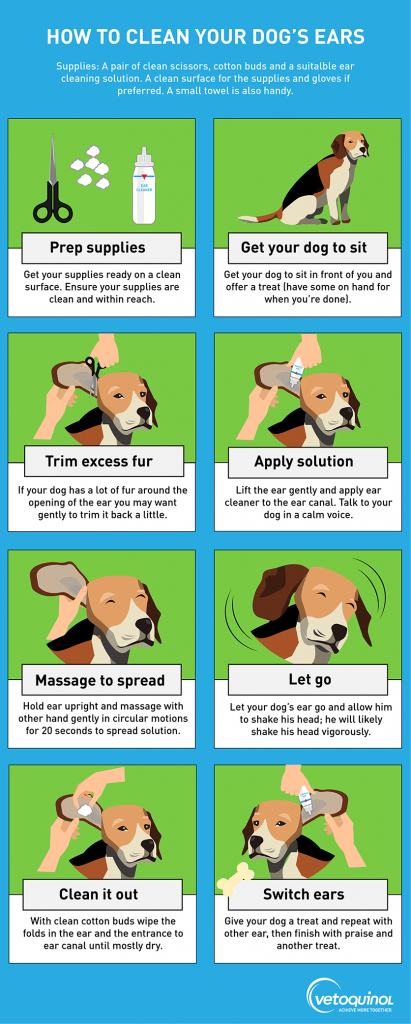
Hips Don’t Lie
Hip dysplasia is a common skeletal condition, often seen in large or giant breed dogs, although it can occur in smaller breeds too. To understand how the condition works, owners first must understand the basic anatomy of the hip joint. The hip joint functions as a ball and socket. In dogs with hip dysplasia, the ball and socket do not fit or develop properly, and they rub/grind instead of sliding smoothly. This results in deterioration over time and an eventual loss of function of the joint itself.
WHAT CAUSES IT?
Several factors lead to the development of hip dysplasia in dogs, beginning with genetics. Hip dysplasia is hereditary and is especially common in Great Danes, Saint Bernards, Labrador Retrievers and German Shepherds. Factors such as excessive growth rate, types of exercise, improper weight, and unbalanced nutrition can magnify this genetic predisposition.
At your dog’s regular check-up, your veterinarian will perform a physical exam. Sometimes this exam is enough for your veterinarian to suspect hip dysplasia. In other cases, it’s up to owners to let veterinarians know when dogs are experiencing discomfort such as decreased activity, lameness, “bunny hopping” gait and loss of muscle mass. One of the first things that your vet may do is manipulate your dog’s hind legs to test the looseness of the joint and to check for any grinding, pain, or reduced range of motion. The definitive diagnosis usually is performed by an X-ray.
HOW TO TREAT?
|
There are quite a few treatment options for hip dysplasia in dogs, ranging from lifestyle modifications to surgery. If your dog’s hip dysplasia is not severe, your veterinarian may recommend a nonsurgical approach. Depending on your dog’s case, the vet may suggest the following:
|
|||
Winter Newsletter 2022
Don’t be a Nervous Wreck, Get a Wellness Check!
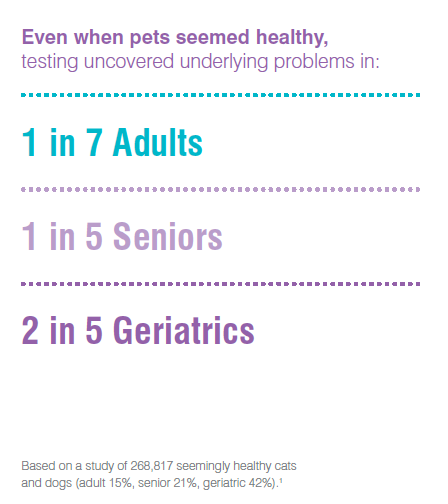
Did you know that 1 in 7 adult pets, 1 in 5 seniors and 2 in 5 geriatrics are hiding signs that they have internal disease? With our newly introduced Wellness Checks, we are on the front foot of diagnosing and treating many unseen conditions that may affect your beloved furry friend.
In the ongoing quest to prevent diseases, veterinary medicine continues its shift toward proactive veterinary services and recommendations. This preventive care focus gives more pets a greater chance at longer and healthier lives.
Historically, veterinary preventative care has primarily meant vaccinations and protection from internal and external parasites. The advancement in technology and research of late is showing that these alone may not be enough and that even when pets appear physically healthy on the outside, there may be more than we know going on internally. Just like you, your pet’s health changes as they age, and with this process happening a lot faster, one year of change can be akin to 7 human years!
What are we testing for?
Our annual recommended check will be at the same appointment as yearly vaccination and comprises a full blood test and faecal test that is sent away to our laboratory. This can detect abnormalities in the organs, infection in the blood and parasites in the body. Should we find something outside of the normal ranges, we will be able to further investigate and treat the problem before it becomes a major health concern.
In the event of good news following the results, this preventative care testing will have added to our understanding of what is normal for your best friend, establishing a baseline that we will be able to compare to in the future. Bringing your pet back for testing each year allows us to track subtle changes more effectively, improving our ability to detect disease in your pet before any outward signs of illness can be seen.
Choosing the Perfect Animal for your Family
If the little humans in your home are desperate for a furry friend, picking the right pet comes down to doing your homework before you bring them home. Are you an active family who’d love to walk a dog? Are you a quiet bunch who’d prefer to cuddle a cat? These are important factors to consider when paddling through the plethora of pet options available.
Dogs are a wonderful choice for a household pet with most parents having spent childhoods with a trusty canine sidekick in tow. Small fluffies like Maltese, Shih-Tzu or general terriers make great family pets. Smaller dogs are better suited to your child’s smaller stature, although we should bear in mind that small dogs still require lots of exercise. Dogs are best introduced when your child is physically independent and is not only old enough to help care for them, but old enough to understand body language and physical cues.
If you are a cat person, chances are your children are too, and a fluffy hot water bottle may be just what your kids are after. Perfect for families who don’t have the space for a dog, self-sufficient and highly adaptable. Consider the amount of time you have to maintain your cat’s fur when choosing the right one for your household. Start with a kitten so your littlies can bond with their new furry friend, however, ensure your children are old enough to understand that a cat’s moody temperament and the odd cheeky scratch may not be a sign of unrequited love!
Guinea pigs are another great option for families because not only are they social animals, but they also make brilliant indoor pets. They are a better pet choice for older children as they are delicate creatures and require finesse when handling so they don’t get dropped or injured. Ensure you’re happy with the level of commitment you need to invest in their maintenance as cleaning their indoor homes is a task too advanced for younger children. Whichever pet you decide is right for your family, the lessons a pet can teach your child of love, respect and care will stay with them their entire lives and stand them in good stead for relationships with all creatures, great and small.
Autumn Newsletter 2022
Let Wobbling Dogs Lie
Canine idiopathic vestibular disease, which is also sometimes called “old dog disease” or “old rolling dog syndrome,” can be very scary for pet parents. To the untrained eye, the symptoms may mimic serious, life-threatening conditions such as stroke or a brain tumour.
The vestibular system comprises the vestibule and three semicircular canals of the inner ear. Like a carpenter’s spirit level, these structures work with the brain to sense, maintain, and regain balance, along with giving the body a sense of where it’s parts are. When these systems are disturbed, most dogs present with the sudden onset of loss of balance, disorientation, head tilt, and irregular jerking eye movements called nystagmus. Many dogs will become reluctant to stand or walk. Most dogs will lean or fall in the direction of their head tilt.
Causes of vestibular disease include middle or inner ear infections, drugs that are toxic to the ear, trauma or injury and hypothyroidism. When no specific cause is found, the condition is called idiopathic vestibular syndrome. These cases are distinguished by the sudden onset of clinical signs and the subsequent rapid improvement with little, if any, medical intervention.
We recently saw Buddy, a 16-year-old Border Collie cross who was referred to us for supportive care following a diagnosis of vestibular disease at Queensland Veterinary Specialists. He was unable to walk, had little control over his bladder and bowels, was rejecting food and had the typical head tilt. After 24 hours of fluids, antibiotics, and anti-nausea medication, he began to love his food again and try his absolute hardest to stand up, walk around and wag his tail. We sent him home after a further 2 days in hospital once he was able to stand on his on and move around in small increments. He has now made a full recovery, with only a slight head tilt remaining. Buddy’s owners say he is doing very well and are extremely glad to have their family member back home.

A Bird’s Gotta Eat
Because there are many species of pet birds, there is no single diet that can be used. Some are seed-eaters, some are nectar feeders, while some eat mainly fruit. So, it is important to establish exactly what your bird can and will eat. The main mistake bird-keepers make is not feeding a balanced diet. For example, Vets often see cockatoos fed solely on sunflower seed, leading to obesity, fatty tumours and liver disorders. Poor nutrition is responsible for many common problems such as moulting, respiratory disease, growth abnormalities, poor reproduction and egg binding. Most pet shops sell bird seed in the correct ratio of various seeds, but if this is fed as the sole diet, birds will develop vitamin, mineral and protein deficiencies.
There are two ways to achieve a balanced diet in seed-eating birds:
Offer seed for 10-20 minutes twice a day or overnight then take it away and leave fresh vegetables (carrot, broccoli, silver beet and spinach), fruits (apple, pawpaw) and native nutrients. Avocado and cabbage may be toxic.
Feed commercially prepared pellets or diets (not bird seed!), which are fully balanced in nutrients.
Summer Newsletter 2021
Oh Christmas Tree, Oh Christmas Tree!
Christmas wouldn’t be complete without the perfect tree and all the sparkly and shiny belongings that go along with it. For those of us with four-legged companions, this can prove the most tempting, and potentially dangerous, playground of the year! Follow these handy hints to help reduce the amount of tree shenanigans your pet can indulge in:
- Cats love to climb and many a Christmas tree has been destroyed by energetic felines (and a few acrobatic dogs!). To reduce the risk of toppling trees, ensure that they are fixed firmly to the walls or ceiling and consider weighting down the base.
- Pets love toys, and to our four-legged friends Christmas tree baubles and ornaments are often the most enticing of all. Ensure that all tree ornaments are tightly fixed to the tree so that they can’t be dislodged by a playful paw.
- Avoid using glass ornaments which can cause significant injury if broken or chewed. Avoid decorations made of chocolate which can be extremely toxic (but very tempting) to dogs and can cause considerable stomach upsets if eaten by cats. Also consider hanging tree ornaments a little higher up the tree and leave the lower branches clear.
Should I Bother about a Dry Schnozz?
A warm or dry nose is often perceived as a sign of illness in pets, but is it? The “dry nose myth” has many owners feeling that their animal may be unwell if the nose is warm and dry. A healthy dog or cat nose may be very wet and cool one moment but then be warmer and somewhat dry the next. In fact, variability is quite normal. The average dog’s nose is 10,000 times more sensitive to odours than the human nose. Their noses secrete a thin layer of mucus that helps to absorb scent chemicals. A moist nose is also one of the ways that dogs regulate their body temperature and cool down. They don’t have sweat glands as such, so dogs secrete sweat from the pads of their feet and their noses.
While a moist nose is perfectly normal, if your dog has a runny nose accompanied by coughing, sneezing, wheezing or difficulty breathing then a visit to the vet is necessary. Your dog may have a respiratory infection or an obstruction in its nose. On the other hand, various things can make your dog’s nose dry, and the dryness isn’t necessarily an indication of something being wrong. An ill animal will generally have a warm, dry nose in addition to other symptoms, like lethargy, decreased or absent appetite, or vomiting/diarrhoea. Sensitivity to plastic is a common issue that can cause your dog to have a dry nose. A quick and easy fix is to switch to stainless steel or ceramic bowls.
Another regular culprit is sunburn. Dogs, cats and even horses are prone to sunburn and possible skin cancer on noses, ear tips and around eyes. Light coated, pink-nosed animals are at greatest risk, but check with your veterinarian about providing sun protection for your pet. If your pet’s nose remains consistently dry, then make sure they are assessed for possible allergens. More of a concern than just a dry nose however would be a lesion, changes in texture or colour, or discharge/bleeding from the nose and any of these should be thoroughly checked by Kedron Vet Clinic.
Spring Newsletter 2021
Rock that Body
Weight management is not only in the forefront of our minds with the summer months and beach trips coming up, we are also thinking about the health implications for cats and dogs that an unhealthy weight can bring. Many owners feel as though they’re treating their pets with extra food to keep them entertained and happy during the long workdays, however a rounder figure can be the start of many life-long complications for our furry friends.
Carrying the extra kilos can lead to diseases such as:
- Diabetes – Cancer
- Arthritis – Respiratory problems
- Heart disease – High blood pressure
- Pancreatitis
These things sound pretty familiar, don’t they? However, for one reason or another, we tend not to associate these conditions with our own beloved animals when considering the size of the meal on their dinner plate. There’s no set weight that any animal should be sticking to, no matter their breed, but we can assess whether they are underweight, the correct weight, overweight or even obese using a body condition scoring system. A healthy weight should appear as though your pet has a visible waist when viewed from above, their ribs should not be overly noticeable but be felt without excess fat covering them and there should not be any fat pockets at the back of their neck or surrounding the base of their tail. Below is a visual representation of each:
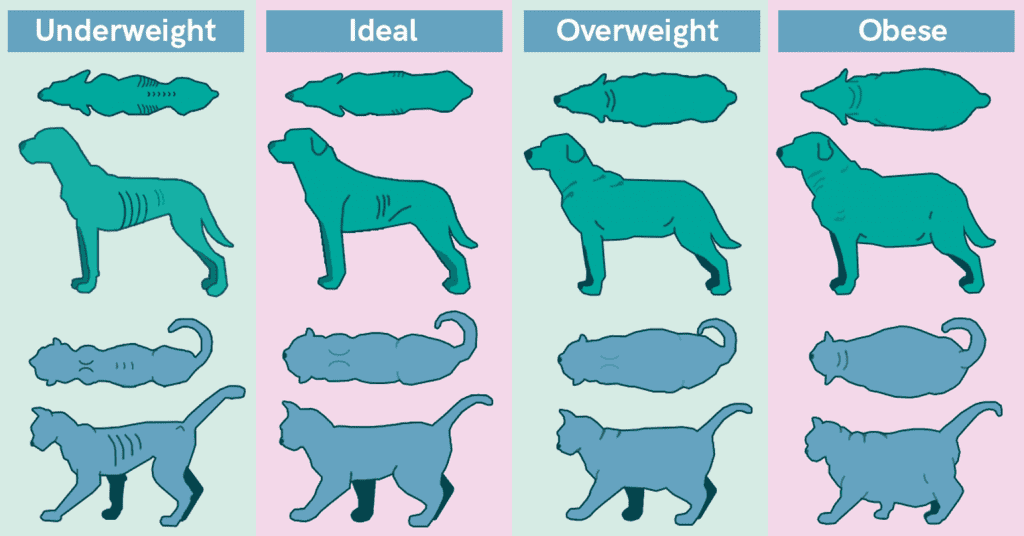
If you think that your pet falls into any of these categories, or if you’re not sure where they sit, book a consult with one of our vets who can formulate a good diet and weight management plan for them. This may include a change of food with a lower calorie content or simply adjusting their current meals to better suit their body!
Don’t Leave Rat Bait to Fate
Nobody wants an unwelcome rodent hanging around! If mice or rats find their way into our homes, they tend to leave a trail of mess and sometimes destruction. You may throw some rat bait around the yard or in your house and forget about it, but if you have animals you will need to be aware of where you place the rat bait because our pets may confuse it for their food.
There are different forms of rat baits available from the supermarkets, the main type is Vitamin K antagonist drugs which include: Bromadiolone, Brodifacoum and Warfarin. Once this has been ingested these drugs prevent the animals blood from clotting and lead to the animal losing a potentially fatal amount of blood. It can take a few hours or even days for signs of consumption to show.
These signs include:
- Struggling to breathe
- Weakness
- White/pale gums
- Bleeding from the nose
- Lethargy
If you see your dog eating rat bait or believe they have recently ingested rat bait, bring them to the vet clinic immediately! If the dog is seen by a vet within an hour of ingestion the vet may be able to make the dog vomit up the ingested substance before it is absorbed. If your dog is showing any of the clinical signs listed above and they have been in an area that you know has baits present, you should bring them to the clinic immediately as they may be bleeding internally. If brought in quick enough we are able to treat with a Vitamin K injection or blood transfusion.
Winter Newsletter 2021
It’s raining coughs and dogs
When it comes to your dog experiencing a cough, there can be many causes. One of the most common causes in our canines is Kennel Cough. Dogs contract Kennel Cough when they inhale Bordetella bacteria or Parainfluenza virus particles into their respiratory tract. It is highly contagious and unfortunately even vaccinated dogs can catch it, just like you still may catch a strain of the flu after having a flu shot. Taking your pooch to highly populated areas such as the dog park, the beach, or boarding facilities increases the risk of contracting kennel cough. It can be treated with medications which the veterinarian will prescribe.
Symptoms include:
*A dry, hacking cough
*Gagging or vomiting after excitement or ingestion of food
*Sneezing and/or runny nose
Another cause of coughing in dogs is heart disease. Untreated heart disease has the potential to be fatal but there are many medications which can significantly reduce coughing and improve your dog’s quality of life. Less common causes of coughing can include foreign bodies or collapsing trachea. Foreign bodies can bring on sudden episodes of coughing and may require your pet to have an anaesthetic so we can fully examine their airway. A collapsing trachea is a syndrome we see in small breed dogs. Finding the cause of coughing is important before appropriate treatment can be recommended. The first step is to book a consultation with the veterinarian. Further work-up may include chest x-rays, ultrasound, blood testing or more involved imaging such as a CT scan. If your pet is coughing, retching or gagging it is important to have a comprehensive veterinary assessment.
On the left is a radiograph of a patient who presented to us with coughing/retching. After realising it was not kennel cough, we decided to check the trachea with x-ray imaging. Inside the red circle is a bone that is lodged in the oesophagus, which is pushing down on the trachea causing the patient to cough. This required surgical removal.
Tail Talk
Would you like to know what your kitten is really thinking? Well, there is a way to get inside your kitten’s head and that is by becoming aware of their body language. In fact, your kitten’s busy little tail is one of their most effective ways to communicate their mood. Here is our guide to what your kitten’s tail is telling you:
- Tail held high – your kitten is feeling happy and confident
• Wiggling at the base or tip – your kitten is saying a friendly “hello”
• Curled under their body – your kitten is feeling submissive
• Curled around another cat’s tail or human legs – your kitten is being friendly
• Fluffed to more than twice its size – your kitten is scared, threatened and defensive (if your kitten is also displaying an arched back, hair standing on end and unfurled claws then you should give them some space!)
• Rapid flicking – your kitten is agitated
• Wagging – your kitten is irritated (note that this is the opposite of a dog’s wagging tail!)
• Thumping – your kitten is highly frustrated, and may even attack
• Slowly twitching tail tip – your kitten is curious or excited (you will often see this when they’re crouching)
So, keep your eye on your kitten’s tail. You will start to notice a wide range of tail movements and get to know your kitten on a whole new level!
Treat your pooch
A bunch of tasty and all-natural snacks have just arrived at Kedron Vet for your doggo to try. We have beef jerky, roo chunks and beef liver for sale for $5.95. There are also chicken tenders available for $6.95. These are great to use for training purposes or just a treat for being a good puppy. Come into the clinic and purchase them today!
Snuffle Rugs
Have you visited us and seen bright and colourful rugs on our food shelves? These are our snuffle rugs that can be used to hide treats in for your fur baby to search and find. If your pet is getting bored whilst you leave them unattended and eating things they should not, the rug is sure to keep them entertained. The snuffle rugs you find in the clinic are handmade by one of our own, Nurse Pippa. They are $60 per rug and can easily be cleaned by handwashing in a sink with some soap and hung out to dry.
Autumn Newsletter 2021
Leave no bladder stone untreated
Bladder stones can form in the bladder of dogs and cats, just like they do in humans. The stones are a collection of different minerals which crystalise over time. They may be the result of persistent bacterial infections, dietary factors, genetics, or a combination of the three. Bladder stones cause irritation and infection within the bladder and can lead to painful urination (or worse!).
The three most common signs of bladder stones are:
*Blood in the urine (Haematuria)
*Straining to urinate (Dysuria)
*Increased frequency of urination (Pollakiuria)
If your pet has these symptoms, our vets will recommend obtaining a urine sample for testing as well as taking radiographs or performing an ultrasound examination to visualise the stones. Bladder stones can appear as a large single stone or multiple small stones that resemble gravel. Most need to be surgically removed, but some stones may be dissolved with a special diet. If left untreated, it can result in kidney infection or urinary obstruction. Urinary obstruction is a very painful situation which leads to sever disruption of your pet’s electrolyte balances and even bladder rupture. Urinary obstruction is an emergency. So, if you ever notice your pet straining to urinate, please seek veterinary attention as soon as possible!
The cat-egories of ageing
Did you know that cats who are over the age of seven are categorised as “senior”? This is based on the physical and biological changes that begin to occur at this age. Their average life span is 14-20 years and as a cat get gets older, their diet and health care needs will evolve.
Some problems that cats of this age face: kidney disease, dental disease, arthritis, dietary issues, thyroid problems, hearing loss and hair matting due to lack of grooming. If you are concerned about your cat’s health and wondering whether it may be related to their stage of life, book a consult with one of our vets to assess their condition.
Signs that your ageing cat needs some help:
* Increase or decrease in appetite
* Reluctance to move around
* Reluctance to jump on beds or lounges
* Changes to their skin or coat
* Increase or decrease to their weight
* Constipation or diarrhoea
* Hissing when touched or petted
* Meowing more frequently and loud
Don’t let the Easter Bunny bite!
With the Easter Bunny just around the corner, there will be a few things to watch out for in keeping your pet safe. Chocolate is the most obvious one! Chocolate contains a product of caffeine called theobromine. Dogs and cats are unable to digest theobromine and consumption can lead to hyperactivity, tremors, panting, vomiting, diarrhoea and seizures. Unfortunately, it can be fatal for some dogs and cats. The darker the chocolate, the more toxic it will be. If your pet has ingested ANY chocolate, you need to seek veterinary attention immediately. Hot cross buns are another one you might not realise are also a hazard to your dog. The sultanas and raisins in these delicious buns can cause acute kidney failure in dogs due to the possible presence of a toxin on the grapes. Always keep these out of reach and watch for any that happen to drop on the floor or go wandering from children’s fingers.
Summer Newsletter 2020
Summer Newsletter 2020
Into the Deep End
The sun is out so let the water activities begin! Swimming pools are a great way to cool down and have plenty of fun, even with our pets. Owning a swimming pool is a great addition to any home but they can be extremely dangerous. Most families are aware of pool safety with small children but what about our animals?
You may think that dogs are natural born swimmers, but they could use a couple of intro lessons before being thrown into the deep end. It is best to teach in a controlled and quiet environment, with both you and them in the pool to be on hand to help if they need it. This way you can teach them how to get in and out of the water in case they accidentally find their way in without your supervision. There are pool accessories out there that can be used to help your dog. You may buy a life jacket, which is a great idea if they are not a great swimmer or are very small and going to the beach amongst the waves. Learning how to perform CPR on your dog is an excellent idea also, in case of emergencies.
Remember to never leave your pet alone with free access to a pool, even if they are an excellent swimmer. If you do have to leave them outside, ensure that the pool gate is closed properly and that there are no holes or areas they could possibly squeeze through.
What is secondary drowning?
This can occur when water has been aspirated into our pet’s lungs/parts of the airways. This is extremely serious and can be fatal if not treated. Secondary drowning can happen hours after being exposed to water, so it is good to have some knowledge as to what the signs may be.
Signs include:
- Coughing/hacking
- Difficulty breathing/wheezing
- Extreme lethargy
When an animal dunks their head underwater, it is quite possible for them to inhale some as often they do not know any different. If you believe your dog has done this and is experiencing secondary drowning, you need to take them to a vet clinic immediately.
Heatstroke is No Joke!
When the weather heats up, it is vital to consider how prepared your pets are to cope. Dogs and cats cannot regulate their body temperature as we do through sweating, which means they are more susceptible to heat stress than humans. If a pet is unable to keep their body temperature within a normal range, they are at risk of heatstroke which can be fatal. Brachycephalic breeds (e.g. pugs, bulldogs) are particularly at risk of heatstroke.
Tips for Avoiding Heatstroke:
Avoid exercising your dog during the hottest part of the day. Instead, head out for a stroll during the cooler times of morning or evening. Carry some water and a collapsible water bowl for an easy drink on the go. It is also a good idea to take note of how hot the ground feels. If it is hot to your touch, there is the potential it may damage your pet’s paw pads. On warm and hot weather days, plan for your pet’s comfort accordingly. Ensure they have access to a cool spot with plenty of shade, and when the weather warrants it, bring your pet indoors. Keep your pet well hydrated by supplying cool, fresh drinking water with some ice cubes added.
What are the signs of heat stroke?
- Excessive and heavy panting
- Agitation and restlessness
- Increased body temperature (over 40 degrees Celsius)
- Drooling
- Gums that appear bright red, bluish or pale
- Breathing difficulties
- Vomiting or diarrhoea
- Muscle tremors and seizures
A pet with heat stroke needs immediate veterinary attention.
Icy treats
Dogs love peanut butter, there is no doubt about it. These freezies combined with strawberries are another crowd favourite. Blend some strawberries with water, pour into an ice tray and spread it with peanut butter before giving it to your dog. Make sure your peanut butter is xylitol free as this artificial sweetener is toxic to dogs and is often found in peanut butter.
If you’re whipping up a sandwich made with canned tuna in water (NOT oil), don’t toss the drained liquid. Instead put the tuna liquid and four ice cubes in a blender and make a shaved ice slushy for your kitty. A flavour they’ll love with added hydration! As with any cat treat, offer this in moderation.
Spring Newsletter 2020
Ditch the Itch
Spring has sprung, and with the change of season, our thoughts turn to spring cleaning and much-needed home improvement projects. Before you embark on seasonal chores or outdoor festivities, take account of potential springtime hazards for your furry friends. Like us, pets can be allergic to foods, dust, plants and pollens. Allergic reactions in dogs and cats can cause itching, minor sniffling and sneezing, or life-threatening anaphylactic shock to insect bites and stings. If you suspect your pet has a springtime allergy, please visit us as soon as possible. 
Here are some clues that your dog may need medical treatment:
- Excessive licking, chewing, biting or scratching
• Excessive rolling, rubbing or scooting
• Foot chewing
• Hair loss
• Recurrent ear problems
• Changes in the skin such as sores or darkened colour
• Redness of the skin
• Body odour
Santa Paws is Coming to Town
We may be stuck at home for the time being, but Santa’s got a special pass to come down under for Christmas and he’ll be visiting us at Kedron Vet! Bring the family along and we can snap a cute picture of you, your furry friend and the big man in red. Join us for a fun time and you’ll even receive a goodie bag for your pet. Mark the date down in the calendar because Santa will be coming on 29th November. The prices are listed below:
$28 photo and gift bag
$38 photo, digital copy, and gift bag
$5 per extra photo
Bookings are essential.
Is your Pet’s Whine a Worrying Sign?
Unfortunately, anxiety in our pets is common! Dogs and cats are wonderfully social and complex creatures, two big reasons why we love them so much. But with that complexity comes many challenges. To help our furry friends feel as calm as possible, we all can try to better recognize the signs of stress, anxiety and fear. It is estimated that up to 77% of pets suffer from stress and anxiety. What causes anxiety for our pets? Some causes are separation, loud noises, changes in the home and vet visits.
What are the signs of anxiety in dogs?
- Barking / whining
- Pacing
- Scratching
- Chewing
- Drooling
- Panting
- Urinating and defecating in the house
- Shaking
- Digging
How to Help Our Pets Feel Less Anxious:
First, it is always a good idea to talk to your vet to rule out any potential medical issues. With that done, here are some simple tips and solutions to help reduce anxiety in pets. Spend more together time with them when possible… so bring on the love! More exercise! Walking, playing, running or whatever can get some energy out and get the blood flowing. Create a quiet and safe space in an interior room that can serve as an escape from problem stimulations. Get professional help: speak to one of our vets for the best guidance!
One Click Away
Online booking is now available 24hrs a day, every day of the year for your furry friends at Kedron Vet. We have seen a fantastic uptake of this time-saving and easy to use service. If you prefer the personal touch to your appointment making and prefer to call us, we are still here for you! Only select appointments are available online also, so if you have a burning question or complicated issue, it is always best to give us a call. And of course, if you have an emergency, call us immediately. To make a booking just head on over to our website at kedronvet.com.au.
K-Laser Success Story
Poor Poppy got into an altercation with another cat a couple of weeks ago, and its bite on her tail caused a nasty looking pus-filled lump (known as an abscess) to form. Unfortunately, there was not enough skin left on her tail for Dr Baron to completely stitch it back together, and this left an exposed wound.
Rather than go for a procedure as intensive as a skin graft, we decided to try our in-house laser therapy to see how we could improve the condition of the skin. Needless to say, we were happily surprised with the results! Check out Poppy’s before and after photo:
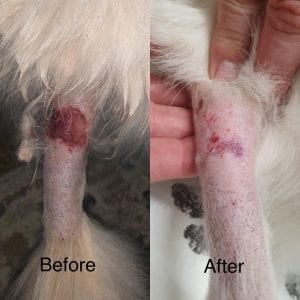
So how does K-Laser work?
K-Laser Class IV therapeutic lasers deliver specific red and near-infrared wavelengths of laser light to induce a photochemical reaction and therapeutic effect.
Physiological effects include increased circulation, reduced inflammation, pain reduction and enhanced tissue healing. Laser therapy has been used in Europe since the 1970s for human medicine and now becoming an intricate part of veterinary medicine with 1 in 4 practices in America practicing laser therapy.
During each painless treatment, laser energy increases circulation, drawing water, oxygen, and nutrients to the damaged area. This creates an optimal healing environment that reduces inflammation, swelling, muscle spasms, stiffness, and pain. As the injured area returns to normal, function is restored, and pain is relieved.
During K-Laser Therapy, infrared laser light interacts with tissues at the cellular level increasing metabolic activity within the cell. By improving the transport of nutrients across the cell membrane, the increased production of cellular energy (ATP) is stimulated. The cascade of beneficial effects that follows includes increased cellular function and tissue repair.
IT’S JUST DOG AND CAT BREATH. WHAT’S ALL THE FUSS ABOUT?
 Do you ever turn your nose up to your pet’s breath? Is it hard to sit next to them with the odour of their breath? Bad breath or halitosis is certainly not limited to humans and can affect dogs and cats. While humans are typically aware (or not aware) of halitosis our pets are oblivious when their breath smells atrocious. This poses a big problem as halitosis can be due to some major dental disease and we as owners are responsible for the oral health care of our pets.
Do you ever turn your nose up to your pet’s breath? Is it hard to sit next to them with the odour of their breath? Bad breath or halitosis is certainly not limited to humans and can affect dogs and cats. While humans are typically aware (or not aware) of halitosis our pets are oblivious when their breath smells atrocious. This poses a big problem as halitosis can be due to some major dental disease and we as owners are responsible for the oral health care of our pets.
What causes halitosis?
Halitosis is the result of odour-producing bacteria that build up in your pet’s mouth, lungs or gut. While we may think that the root of bad breath is always in the mouth, it could be a sign of a more major problem with the liver, kidneys or gastrointestinal tract. Regardless, halitosis is the result of bacteria build-up, saliva and food that have contributed to plaque. If left untreated, this build-up over time can result in an infection affecting the gums and surrounding tissues of the teeth and cause the breath to worsen.
What do I do if my pet has halitosis?
First, don’t panic! There are lots of remedies and help available. The best thing you can do is make an appointment with your veterinarian for a physical exam and comprehensive oral exam. He/she will recommend specific diagnostics based on physical exam findings and history. Blood work may be recommended to figure out if there is a problem present other than oral disease. If your veterinarian finds excessive calculus, broken teeth, discoloured teeth, etc. on oral exam then he/she will recommend a dental cleaning under anaesthesia.
What treatment will be done for my cat and dog with halitosis?
As mentioned previously, if there are problems found on the physical exam or blood work, then those problems will be addressed first. If a teeth cleaning is warranted and there are no problems on the initial exam or blood work, then a cleaning under anaesthesia will be scheduled. Cleaning under anaesthesia will typically begin with a thorough oral exam, dental radiographs, and routine scaling/polishing of all the teeth. The examination and radiographs may reveal more significant concerns that may require further treatment. If abnormalities are found, such as fractured teeth, tooth root abscesses, etc., then extraction of those teeth may be recommended. After the dental cleaning, sealants may be applied in some cases. Rinses, antibiotics, and pain medication may also be sent home to reduce discomfort, help clear infection, and allow for proper healing.
What can I do at home to help prevent/treat halitosis?
There are many easy things you can do at home to help prevent halitosis. There are lots of choices of toothpaste and toothbrushes designed specifically for pet use. Pets need their teeth brushed just like humans and it is recommended to brush them once a day. If that is too often for you, even as little as once a week will be beneficial. Antibacterial rinses can help with bacterial load and in turn with halitosis (and they are easier to use than they sound!). Chews can also be given to help with the mechanical removal of plaque. Some chews even contain antibacterial ingredients that can combat the bacterial load. Finally, some dental diets offer another option for removing plaque mechanically.
Remember to have a complete oral health exam performed at least annually as part of a general physical exam. Combining regular monitoring with proper dental care as recommended by your veterinarian will help to prevent halitosis and severe dental disease from occurring. Make an appointment today!
POSTED 26/05/2020
WINTER NEWSLETTER 2020
The Snuggle is Real
Our pets need to be kept warm too! It’s wintertime and animals big and small feel the cold just like us. We wrap ourselves in thick, fluffy winter pyjamas but what about our four-legged friends? At any age, our pets are more prone to illness when the weather cools down. Their joints can experience an inflammatory response and be susceptible to pain in the elbows and knees, which is especially true for arthritic animals. Prepare a bed and add a thick, warm blanket to ensure they have a comfortable and warm place to sleep. Pet stores have plenty of options for doggie jackets to keep them warm, just like our pjs! Whilst you may tend to think that the longer a cat or dog’s fur is, the warmer they will be, this is not always true. A fluffy coat however can lead to matting, skin problems and a lot of time spent trying to brush out knots, so ensure to stay up to date with your grooming routine.
Tips to keep pets warm:
* Allow them inside
* Winter Jackets
* Warm, dry, comfy bedding
* Walk during the day instead of evening
Hissing Mad
Being a cat owner, you probably know that some cats can be sassy. Sometimes this sassy attitude can get them into trouble and fights with other felines, especially if they are an outdoor explorer. If you notice that your cat has developed a small bump, that rapidly grows, it could possibly be a cat fight abscess. Cats can be territorial, so they will defend their environment if another cat wanders into the wrong area. Felines that are entire (not desexed) are more likely to get into fights with others, and entire males tend to compete to get the opportunity to mate with a female. If a cat happens to bite another and the teeth penetrate the skin, it can leave a pocket in the subcutaneous layer where bacteria grow and an abscess begins to form. Outdoor cats should be vaccinated against Feline Immunodeficiency Virus as this is transmitted through cat’s saliva. If you are concerned your cat has been in a scuffle, best to get them checked over by a vet. This can be prevented by keeping cats indoors.
Recovery Blues
Booking your pet in for a surgery procedure can be daunting, but you can rest assured they are in the best care with us. Upon picking your pet up from the clinic, you will be shown through some post-surgery care notes. These instructions are given to ensure your fur baby has the best recovery and healing process possible and so they need to be followed. We all know about the cone of shame and how funny our pets look whilst wearing them, but they require this for a healthy recovery. Without an e-collar on, there is the possibility of your pet chewing the sutures out resulting in you having to come back in to get the wound re-stitched. If feeling itchy or sore, your animal may even lick their wound, leading to an infection and the need to purchase antibiotics.
Another complication may occur when we are too active! After surgery, some well-earned RnR is essential for healing. When male dogs get desexed, they have a small pocket left and this can lead to swelling and/or filling with blood when blood vessels burst from too much activity. Ensure you attend your post op checks as recommended, so the vet knows how the wound is healing. And as always, monitor your pet throughout the recovery period and alert your vet if you are concerned.
POSTED 28/02/2020
COVID-19 UPDATE
Dear valued clients. We hope everyone stays well during the COVID-19 crisis and society can work together to end this as quickly as it started. Kedron vets and nurses are continually taking precautions to mitigate the possible spread of COVID-19 to our staff and clients. Importantly, we are trying to limit the number of clients and staff to the clinic at any one time.
If you would kindly wait in your car upon arrival and phone us, one of our friendly staff will then invite you to enter the premises.
Please use one pump of the hand sanitiser provided on the front counter and try not to touch or lean on any walls/ objects unnecessarily.
We are requesting only one healthy adult person with one pet at a time.
Please phone ahead if you need to order required prescription medicine repeats or food, worming and flea control so we can arrange to have them ready for you without the need to wait.
We are currently not handling any cash for transactions.
Whilst we realise there may be inconveniences due to the changes COVID-19 has caused, we do ask for your patience and understanding. Our opening hours are still Monday to Friday 8am- 6.30pm and Saturday 8am- 1pm.
AUTUMN NEWSLETTER
MARCH – MAY 2020
Get to the Crunch
about Lumps and Bumps
As vets, we spend a lot of time checking out weird and wonderful lumps in and on our patients. Dogs and cats are prone to getting skin lumps, particularly as they age. It is common for animals to develop new lumps as they age, and sometimes at a younger age too. Lumps can range from benign warty growths and skin tags to malignant cancerous masses, and it is not possible to tell just by looking at a lump exactly what it is.
When should I get a lump checked?
Any new lumps should be checked by the vet, and any existing lumps that change in appearance or grow suddenly. The vet will decide whether the lump is suspicious-looking and warrants immediate diagnosis, or if we should just continue to monitor the lump for changes.
How are skin cancers diagnosed?
Depending on the size, appearance and location of the mass, the vet may take a FINE NEEDLE ASPIRATE of the mass in consult, or may instead recommend a more invasive PUNCH OR WEDGE BIOPSY, or even an EXCISIONAL BIOPSY.
A fine needle aspirate involves taking a sample of cells from the lump with a needle, and preparing a slide using special stains to look at under the microscope. If the cells seen are in any way sinister, it is may be recommended that the slide be sent away for a pathologist to assess and diagnose.
With a punch/wedge biopsy, a small sample (or samples) of tissue is cut and sent away to pathology. This usually gives us a more definitive diagnosis than an FNA. An excisional biopsy involves removing the entire lump and sending it all away for analysis.
What is the point of getting a diagnosis?
A correct diagnosis allows us to determine whether the lump needs to be removed, and if it does, how much tissue surrounding the lump needs to be removed. This will depend on the type of cancer and how aggressive it is. If you notice anything lumpy, give us a call to book an appointment.
Getaway Guidelines
While this time of year marks a chocolate filled extravaganza, we also have the joy of multiple public holidays in a short amount of time. Yes please! Many families and friends decide to make the most of the opportunity and spend this time away, however are then faced with the holiday that our furry family members will embark on. Before leaving our pets at boarding facilities, kennels, with friends or even bringing them with us, we will need to ensure they are safely prepared for their own adventure.
You should firstly check that all of their microchip details are up to date. This is so that if Fido decides to wander and conduct his own sightseeing, you will be easily contacted to collect him. Vaccinations will also need to be current both for prevention of catching illness in new places and as a requirement of most boarding places. Before leaving, make sure you have packed any toys or medication your pet will need as well as towels and a rubbish bags in case of accidents along the way.
When you leave for your trip, ensure your pet is secure in the car. Our feline friends should be in their crate, while our canine companions should be in a car harness. If you are travelling with a dog, it is important to stop every two hours for a toilet break and for them to stretch their legs.
If you do have to leave your pet behind, do some research and find the right facility for their needs. We offer short stays here for cats and dogs under 20kg, which can give you nice peace of mind that a vet is always near should an emergency arise. For larger dogs who need a lot of stimulation and exercise, ask around for recommendations from friends and neighbours who have used the services before, they will always know best!
The Painful Part of being a Pet Parent
There are many parts of being a pet parent that we cherish and enjoy above everything else. One of the most difficult parts though would be when we know something is wrong with out pet and cannot pinpoint what it is or how we can help. A very common issue vets and vet nurses face in clinic is fur parents having trouble identifying signs of their pet being in pain. Even trained professionals find it tricky to diagnose when the animal can’t talk.
By knowing some typical behavioural changes that pets display when in pain, we can start to get to the bottom of the problem and work out any underlying health issues.
Dogs:
- Whimpering and howling
- Anxious or submissive behaviour
- Loss of appetite
- Aggressive behaviour such as growling or biting
- Refusal to move or guarding behaviour
- Hesitation to go on walks
Cats:
- Weight loss
- Changes in defaecation and urinary habits
- Excessive grooming seen through licking
- Guarding behaviour
- Quiet or overly sleepy
- Resisting jumping
POSTED 28/02/2020
IS YOUR CAT A FIGHTER?
WATCH OUT FOR YOUR CAT’S FELINE TEMPER
Cat Fights:
Being a cat owner, you probably know that some cats can be sassy. Sometimes this sassy attitude can get them into trouble, especially if they are an outdoor cat. If your cat has developed a small bump, that rapidly grows, it could possibly be a cat fight abscess. Cats can be territorial, so they will defend their environment if another cat wanders into the wrong area. Felines that are entire (not desexed) are more likely to get into fights with others, entire males tend to compete with each other to get the opportunity to mate with a female.
When cats fight, their teeth can penetrate the other cat’s skin, which can leave a pocket in the subcutaneous layer where bacteria are left and an abscess begins to form. Outdoor cats should be vaccinated against Feline Immunodeficiency Virus as this is transmitted through cat’s saliva. If you are concerned your cat has been in a scuffle, best to get them checked over by a vet. This can be prevented by keeping cats indoors.
Cat Claws:
Who else thinks the sharp pointy little needs on cat’s feet are the worst? However annoying, their claws help our cats grip onto items when they’re climbing. It is important to keep their claws in good condition. It is a good idea to regularly check your cat’s claws to ensure they haven’t grown too long. Outdoor cats have plenty of trees or fences to scratch their claws on whilst our indoor only cats do not. Provide a scratching post for your indoor cats as this will act as a nail file and will prevent them from sourcing out furniture to scratch.
If you notice your cat’s claws are quite long and they aren’t scratching, you will need to have their nails trimmed. This can be performed by your vet or you can purchase some cat nail clippers from a pet store. If you are brave enough and decide to clip your cats nails yourself, you need to be aware that it can be very easy to hit the quick and make them bleed.
POSTED 20/01/2020
SUMMER NEWSLETTER
DECEMBER – FEBRUARY
HOLIDAY HAZARDS
As they say at this time of year, it really is beginning to look a lot like Christmas! Decorations are out and as the festive feast is getting prepared, let’s not forget about our furry family members during this time. There are some hazards that we should be aware of when we start celebrating with all our loved ones.
Check out the below naughty list of common holiday dangers to our pets:
- Christmas Delicacies: Many human foods can make your pet very sick. Candy canes, chocolate, mince pies, Christmas pudding, blue cheese, macadamia nuts, grapes, currants, gravy, garlic, chives and onions are only a few of the festive foods we need to keep away from our furry friends. Be wary of cooked bones also as they can easily damage your pet’s mouth, throat and intestines and can cause constipation and make your pet choke.
- Shiny Tinsel and ALL our Merry Decorations: If your pet can’t resist and decides to taste some tinsel, it can become stuck in their intestines, creating a blockage which can result in life-threatening complications. Animals can then experience vomiting, diarrhea and loss of appetite and surgery is the only option to relieve the obstruction. It is best to try to stick all decorations higher up on the tree as even baubles can hurt your pet if they break in their mouth. We all know how intrigued they become with the colourful and shiny new decorations around their domain!
- Bright and Inviting Fairy Lights: Our feline friends in particular can become curious and aim for the fairy lights around the house or tree. Just like us, these lights and cords can burn and even electrocute them. If you notice your pet acting dazed and confused or experiencing trouble breathing, burn injuries or seizures then electrocution may be the cause. So remember to be careful to hang lights out of reach and make sure the cord is protected.
- Avoid the Mistletoe and Festive Plants: Keeping our pets away from a sneaky kiss under the mistletoe is very important as it contains a lot of dangerous toxins. There are a range of poisonous plants that could be around your house. While lilies, amaryllis and poinsettia plants look beautiful, it is best to keep them out of reach of your pet’s grasp.
If your pet has ingested something from the list above or is displaying any of these symptoms, please seek veterinary care immediately. But don’t think Santa can’t stop by and treat all the well-behaved furry friends in your home. There are a range of other goodies you can give your pet, such as Kong toys and treats, and most importantly spending some extra quality time with them to unleash the joy and cheer at this time of year!”
Orthopaedic Case of the Month – Growth Plate Fracture
Lucy is a 10 month old Staffy cross who visited us recently after suddenly going lame whilst out in her back yard. She was non-weight bearing lame (hopping on three legs) on arrival at the clinic, and the soft tissue surrounding the stifle (knee) was noticeably swollen. The vets could not feel any obvious fractures and were not able to detect movement that would be diagnostic of a cruciate ligament injury. Given that the swelling and pain were significant, x-rays were recommended straight away.
Lucy was given pain relief and sedation to keep her comfortable and still for her x-rays to be taken. The images revealed an unusual fracture in one of her growth plates. Growth plates are zones in the bones of young animals that are soft and contain rapidly dividing cells to allow on-going lengthening of the bones. Once maturity is reached, the growth plate ossifies (turns into hard bone), and the animal will stop growing. Any trauma to growth plates can result in defective growth of the affected bone.
Lucy’s injury resulted in a displacement and fracture of the growth plate at the top end of her tibia (shin bone), most likely caused by pulling away from being caught in a fence or similar action. Luckily for Lucy and her lovely owners, immediate surgery or casting were not necessary for this injury, providing that Lucy could be rested strictly for six weeks. As she is close to maturity, it is anticipated that her bone development will not be significantly affected.
For a young energetic dog, Lucy is proving to be an excellent patient, although and she is looking forward to being able to run around again soon!
POSTED 21/9/2019
SPRING NEWSLETTER
JULY – SEPTEMBER 2019
CAUSES AND SYMPTOMS OF HYPOTHYROIDISM

Dr Christine recently saw an older patient with a case of lameness for a check-up. Bowie, the 8 year old mixed breed dog, had injured herself when escaping during a storm a few months ago and her owners noticed she was becoming slower in her movement and had trouble going up the stairs. They had thought that Bowie’s age combined with the injury was causing her to lose her energetic and fun-loving nature. Upon seeing the muscle wastage in Bowie’s hind legs and some strange hair loss on her tail, Dr Christine wanted to investigate further. As it turns out, a previous vet had DNA tested Bowie and found Chinese-Crested dog in her ancestry, and thought this could be the cause of a bald tail. Whilst still recommending x-rays to assess the lameness, it was recommended to run a routine pre-anaesthetic blood screen with additional thyroid testing. With blood results showing very low thyroxine levels, Dr Christine was able to diagnose hypothyroid disease, a condition that can cause muscle weakness, neurological problems and hair loss. Proceeding with the x-rays provided more proof that while not having perfectly shaped hips, there were very minimal signs of osteoarthritis or any other issue causing Bowie’s lameness. She has now started on a lifelong treatment for the thyroid problem, and within days her family happily reported that Bowie was behaving more like her old self. Less than a month later, Bowie’s hair is growing back, and her skin and coat are softer. She is bounding round the yard like a puppy and looks like a different dog.
What causes hypothyroid disease?
Most cases (95%) of hypothyroid disease in dogs are either immune-mediated (meaning that the body destroys the thyroid gland tissue) or idiopathic destruction or replacement of thyroid tissue (which is
medical speak for ‘unknown cause’!). Either way, the gland doesn’t produce enough hormones.
What are the symptoms of hypothyroidism in dogs?
A hypothyroid dog may show some of the following signs:
• Weight gain, particularly with no change in diet
• Lethargy or decreased activity levels
• Loss of hair, with a ‘rat tail’ appearance being strong cause for
suspicion
• Skin changes – hyperpigmentation, increased skin infections,
thickened skin, greasy skin/coat are some examples
• Muscle weakness
• Seizures and other neurological symptoms
The symptoms listed above can be caused by a number of other
diseases as well, so if you have any concerns about your animal’s
health, Drs Baron and Christine are always happy to discuss them
with you.
NEED HELP WITH YOUR DOG’S BEHAVIOUR? WE HAVE JUST THE TRICK!

Jordan Dog Training specialises in animal behaviour and uses positive reinforcements. They currently run puppy pre-school classes at our clinic on Sunday mornings. These classes are a great opportunity for your pup to socialise and learn the boundaries of interacting with other puppies whilst in a safe and controlled environment. Puppy pre-school also helps you learn how to raise a healthy and well-behaved dog. The classes are designed for puppies from 8-18 weeks of age.
To attend the classes, you will need to ensure that they have had their first vaccination. Jordan Dog Training also offers in-home training where a dog behaviour specialist will come to your
home and asses your dog and the environment to develop a training program designed just for you and your dog. Their goal is to maximise positive outcomes with fast results.
Common adult dog behaviours they can assist you with include:
• Separation anxiety
• Disobedience
• Barking
• Nervousness
• Aggression
• Jumping on guests
• Lead pulling
• Destructive behaviours
If you would like to enquire about any of these services, you can register online at www.jordandogtraining.com.au or contact them on (07) 3264 8180.
NOT IN THE MOOD FOR WORMS
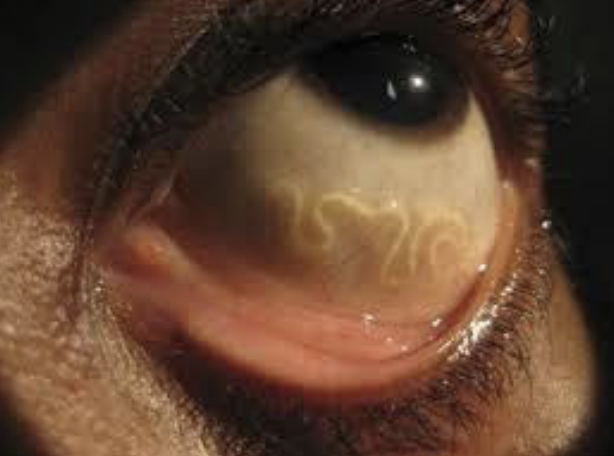 Worming your pet can seem like a bit of a chore – it comes around every few months and there are multiple products on the market that all do slightly different things. We are here to tell you that it doesn’t
Worming your pet can seem like a bit of a chore – it comes around every few months and there are multiple products on the market that all do slightly different things. We are here to tell you that it doesn’t
have to be a complex process! For starters, here at Kedron Vet we send you a text message reminder every time your furry friend is due for their worming so you can come and pick it up any time from the
friendly girls at the counter. As for which products to choose and knowing which will be suitable for your needs, our nurses have all the
information. In a nutshell, you need to worm your dog monthly if they don’t get the annual heartworm injection (this is an additional injection on top of the usual C5 vaccination), or every 3 months if they do have the injection. Cats need worming every 3 months. Whilst you might feel that your pet is completely clean and healthy, the cat down the road or another dog at the dog park may easily transmit worms to your animal, which in turn can be passed on to you or your children. The most common worms of cats and dogs that can be spread to their humans are roundworms, hookworms and tapeworms. None of these are particularly pleasant, so it is well worth
keeping up with the recommended worming schedule!
POSTED 30/7/2019
4CYTE is changing the game for dogs
4CYTE is a newly developed product for animals (mainly dogs) with arthritis. 4CYTE EPIITALIS Granules is for dogs with mild arthritic symptoms and is a preventative for active dogs. Whereas, 4CYTE EPIITALIS Forte Gel is a supplement that targets pathological pathways linked to arthritis and joint injuries. EPIITALIS is an active ingredient and has proven to be revolutionary. Research has shown that stimulates healthy cartilage production, repair damaged joints due to age, injury and arthritis. EPIITALIS positively modifies the disease process rather than relief of symptoms. It is quick and safe to use long term.
The research and results do not lie. Come in today for a consultation to discuss with our professionals your best option for your beloved friend. Watch the attached video for more information.
https://www.youtube.com/watch?v=cFXLH5lxSfI
POSTED 12/12/2018
Festive Dangers
Common food dangers to our pet’s at Christmas
Christmas is a great time of year and should be fun for all the family, and our pets included. Many of us are already aware of some of the potentially toxic foods our pets can come across and take steps to avoid them. However, the festive period is one where we often introduce all manner of exciting items into the house that we don’t normally. Below is a chart of common Christmas poisonings. It goes without saying, if in doubt contact your vet and they will be able to advise you
1.Grapes
Exactly why and how these are poisonous to dogs is unknown and the exact volume needed to cause symptoms is difficult to predict. Some dogs will eat one or two grapes and become seriously ill with acute kidney failure but others can eat many of them without apparent signs. The only way to be safe is to keep them out of reach of your dog.
2.Christmas Pudding, Christmas Cake and Mince Pies
* They are jam-packed full of raisins and sultanas. These are all a variation on the ‘grape’ and as such have the same serious health risks. So it is easy to ingest far more ‘grapes’ in this form than they would fresh grapes because there are so many packed into these cakes and they are smaller.
* They are full of fat, which can cause diarrhoea and vomiting and can lead to pancreatitis.
* They may be laced with alcohol which can cause many of the symptoms of intoxication seen in people
3. Chocolate coins and other choccy decorations
Most people are aware of the dangers for dogs of eating chocolate. However, it is not uncommon for people to forget about chocolate coins or decorations and leave them in an irresistible location. As well as the toxic effects of chocolate, the actual wrapping foil can be problematic as its works through the gut.
4. Bones & Fatty meats
At this time of year we often cook far more meat joints than usual and this normally results in many more bones lying about. Once cooked all bones become brittle and splinter easily. If fed to dogs this can cause obstruction, and smaller pieces can cause gut irritation, constipation and even perforation. Make sure you dispose of the string from any meat joints as this can be a tempting toy for your pets and could be harmful if ingested.
5.Macadamia nuts
Within 12 hours of ingestion macadamia nuts can cause dogs to experience weakness, depression, tremors, vomiting and hyperthermia (increased body temperature). These symptoms tend to last for approximately 12 to 48 hours, and as with all the other food groups mentioned if you suspect your pet has consumed macadamia nuts note the possible quantity consumed and contact your vet.
6. Alcohol
We tend to use much more alcohol in our cooking at this time of year. As it is for people, alcohol is also intoxicating for our pets and can cause similar unpleasant side effects. If your pet does get into mischief and consumes any of these things then the first thing to do is contact your local vet for advice. Often the quicker treatment is sought the easier and more successful the treatment.
Posted 24/10/2018
Slizzin seasons 
Spring is here, and with lots of fun to be had in the sun. It’s important we remember to help our pets stay cool with the soaring temps the season brings. Below we have included some helpful tips to help your pet during spring and the summer season ahead.
- Never leave your dog in the car. No, not even if you think you’ll only be a few minutes. Even when it isn’t that hot outside, the temp can soar inside a closed car.. Leave your dog at home, or go places where he can come with you.
- Keep your house cool. If your pet’s home alone, make sure he/she can truly chill. Leave the air conditioner on, and close the drapes. If you don’t have AC, open the windows and turn on a fan. You may want to see if a cooling vest or mat can help.
- Watch when you exercise. Limit when and how much you do when it’s hot and humid. Take walks in the cooler part of the day-the early morning and evening. And carry enough water for both of you.
- Check the pavement. Before you head out for a walk, touch the pavement. If it’s too hot for your hand, it’s too hot for your dog’s paw pads. Walk on the grass and stay off the cement.
- Offer plenty of water and shade. Don’t leave your pet alone outside for long. And when he/she is there, make sure he/she has shade and lots of fresh, cool water. Add ice cubes when you can. Trees are better than doghouses for shade. They let air flow through. Doghouses can trap the heat and make it worse. Think about a kiddie pool or a sprinkler to help your dog cool off in the yard.
- Make cool treats. Help your canine chill from the inside out. For puppy ice pops, make ice cubes with tasty treats inside. Or fill and freeze a chew toy to make a chilly snack.
- Keep an eye on the humidity, too. When the air is full of moisture, your dog may not be able to pant enough to cool himself off. That can raise his temperature, which can lead to heatstroke. Stay inside, and limit exercise, too.
- Take care of at-risk dogs. Be watchful if you have a snub-nosed pet like a pug or bulldog. Their smaller airways make it harder for them to release heat when they pant. It’s also easy for old and overweight dogs, or those with heart and breathing problems, to get heatstroke.
- Groom your pet. If your pet has long hair, get rid of any mats and tangles. It will help keep him cool. Don’t shave or clip his coat before you talk to your vet or groomer. The extra fur that keeps him warm in winter may also keep him cool in summer.
- Watch for signs of overheating. Your dog can’t tell you when he doesn’t feel well, so keep an eye out for heatstroke, which can have these symptoms:
- Heavy panting or trouble breathing
- Heavy drooling
- Rapid heartbeat
- Dark or red gums and tongue
- Dizziness , weakness or agitation
If you see any signs, get him to the vet right away.
Posted 01/08/2018
Heart of the problem. 
What Is Heartworm.
As the name suggests, heartworm is a serious and potentially deadly disease characterised by large parasitic worms, that cause infestation of the pulmonary arteries of the heart.
As a result, the heart is forced to pump extra hard to keep blood flowing, which can lead to heart failure. The disease can also severely damage other parts of the body, such as the liver and kidneys. It affects many types of animals, including domestic and feral dogs and cats, dingoes, foxes and ferrets.
How do pets get Heartworm ?
Heartworm is spread by mosquitoes. Just one bite could infect your pet. At least 60 species of mosquitoes transmit heartworm disease- when they bite an infected animal, they suck the blood filled with microfilaria (1st stage larvae) , which then develop into a 2nd stage larvae inside the mosquito. That same infected mosquito can go onto infect a healthy new pet with this larvae which develop in adults over a 6 month period. Heartworm is more common in tropical climates but it has spread to all states of Australia.
What happens if my pet get’s heartworm ?
We can test for heartworm in dogs and cats, but usually blood tests will not detect infection until the worms have matured into adults, about six months after the initial infection. You usually don’t see any symptoms until infection has advanced. Treatment is expensive and difficult, and often requires hospitalisation, and harsh drugs and surgery to kill the adult heartworm. If heartworm is left untreated in your pet , risk of death is high.
Symptoms in dogs
* A dry chronic cough * Lethargy / Fainting * Weight loss
* Breathing problems and difficulty with exercise
* Ascites ( where the abdomen swells due to fluid build up because the heart cant pump normally )
Symptoms in cats
* Coughing * Gagging * Raspy breathing * Vomiting
How do I prevent heartworm ?
Heartworm can be prevented by either monthly tablets, topical applications or by annual injections. There are a range of monthly treatments available but we recommend annual injections for compliance as missing monthly treatments can introduce an infection to your pet.
ASK YOUR VET ABOUT OUR YEARLY HEARTWORM INJECTION OR MONTHLY PREVENTIVES.
Take advantage of our discounted heartworm injection for your 12 week puppy for $45.
